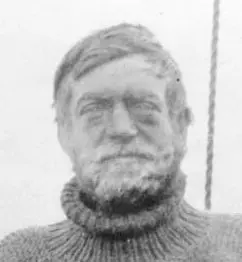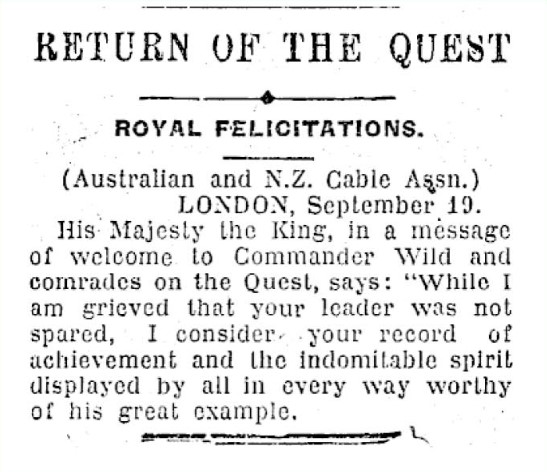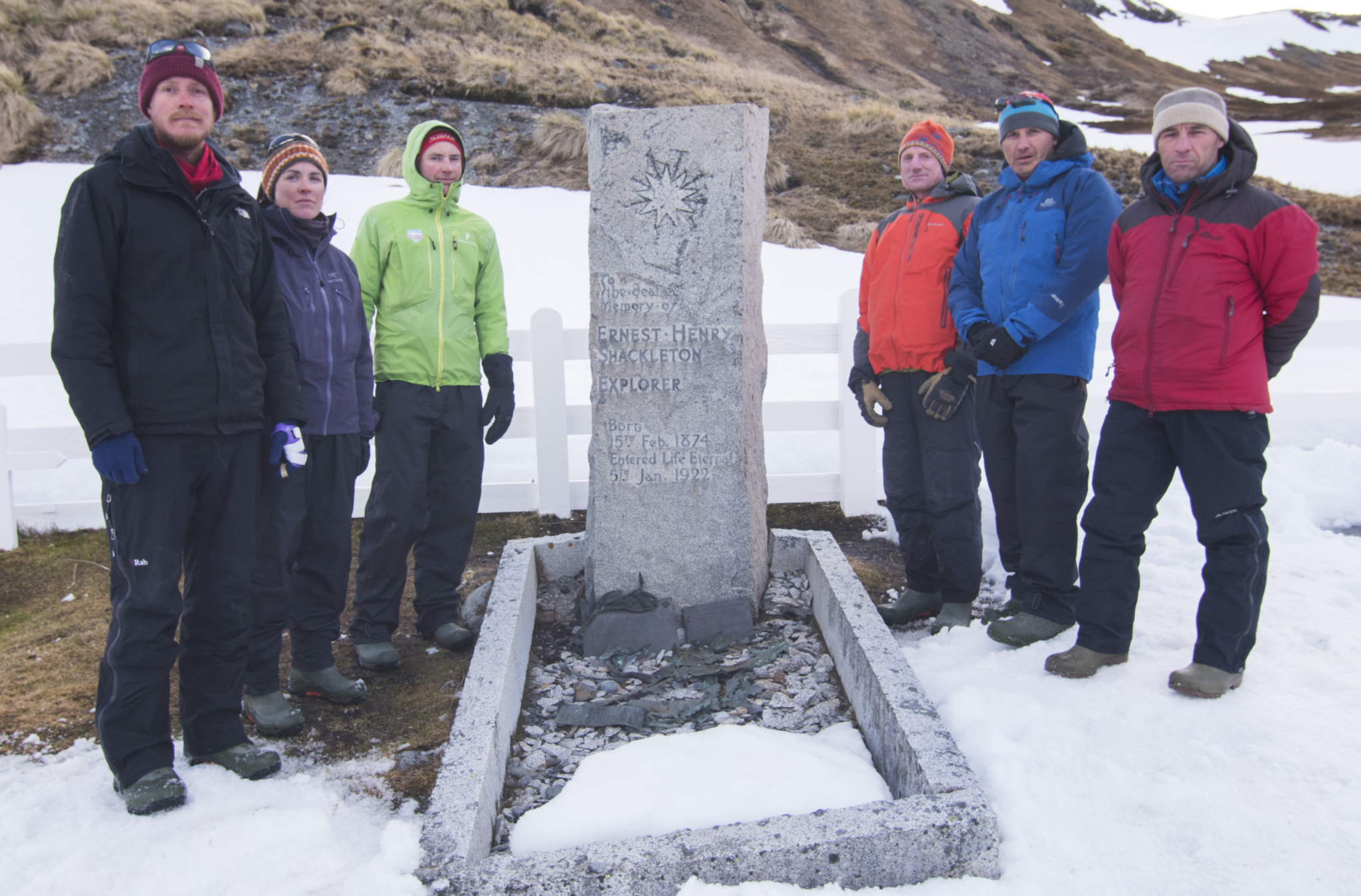The Shackleton-Rowett Quest expedition was Shackleton’s fourth Antarctic Expedition, with the goal of circumnavigating Antarctica. On 17 September 1921 Shackleton’s final expedition set sail from St Katherine Docs in London.
Shackleton initially planned to lead an expedition to the Arctic however, delays and lack of financial support led to the expedition being changed to an ambitious two-year Antarctic programme funded by British businessman, John Q. Rowett. Unfortunately, from the very beginning Shackleton’s fourth Antarctic expedition did not go to plan.
Largely as a result of engine difficulties the crew spent a month in Rio de Janeiro resulting in plans to cross to Antarctica, via South Africa, to be abandoned. Instead, Shackleton decided to set sail for South Georgia and its nearby regions. It quickly became apparent the constant difficulties took a toll on Shackleton’s physical and mental health, so much so, that members of the crew noted concerns in their diaries.
On 17 December 1921 a doctor was called for by members of the Shackleton-Rowett Expedition after Shackleton “felt a slight faintness”. It is thought he suffered a minor heart attack aboard the Quest and it’s also believed the immense strain of his lifetime of explorations led to his poor health.
On 4 January 1922, Quest arrived at Grytviken whaling station, South Georgia. The next day on 5 January 1922 the doctor, Alexander Macklin, was called for again in his cabin. Shackleton’s right-hand man, Frank Wild, recorded in his diary at 3am:
I sat up saying ‘Go on with it, let me have it, straight out!’ Macklin replied, ‘the Boss is dead!’ ‘It was a staggering blow.’ – Frank Wild
Shackleton had suffered a fatal heart attack at 47 years old, signifying the end of the heroic era of Antarctic exploration.
Sir Ernest Shackleton
Following his passing, second-in-command Frank Wild led a further three-month cruise to the eastern Antarctic, however, was unable to proceed further than 20°E, well short of its target. Wild returned the ship to South Georgia, on the way visiting Elephant Island, where he and 21 others had been stranded after the sinking of Endurance during Shackleton’s Imperial Trans-Antarctic Expedition six years prior. Eventually in June 1922, Wild received a message from Rowett ordering the ship home to England. The crew arrived back home in England on 16 September 1922.
‘The leadership fell on my shoulders… I knew that Sir Ernest Shackleton would have found some way to carry on, and I decided that by hook or by crook I would carry on also.’ – Frank Wild
Wild said the expedition had been disappointing owing to the weather and a bad ice season. However, they achieved great scientific results and retrieved a large number of deep sea and biological samples along the journey, inaccessible islands were geologically and ethologically examined and South Georgia was geologically surveyed. Today, these specimens have provided new data for existing species. Historic information such as this can help with the study of climate change by showing how the ranges of wildlife have altered over time. Dr Joanne Cooper, Senior Curator of birds at the Natural History Museum, said the Quest specimens also allowed for investigations on a new genus of the Gough finch, which is now recognised as Critically Endangered due to the impact of mice in its native habitat.
Waikato Times newspaper excerpt after the return of Quest © Stuff Ltd is the copyright owner for the Waikato Times.
Before Quest headed south, Wild made arrangements to send Shackleton’s body home to Lady Emily Shackleton, accompanied by crew member Leonard Hussey. However, the body was transported as far as Montevideo, Uruguay aboard the steamer Professor Gruvel. There Hussey received a telegram informing him that Lady Shackleton felt that it was more fitting that her husband was buried on South Georgia.
When Quest reached Leith Harbour on April 16, they were surprised to see Hussey and learned that he had instead returned to South Georgia with Shackleton’s body. On 5 March 1922 Shackleton was buried at a ceremony attended by Hussey, managers of the five South Georgia whaling stations, and a hundred whalers and seamen who sang their Norwegian funeral hymn. The short service was conducted at Grytviken church, presided over by Edward Binnie, the magistrate.
Shackleton’s coffin, draped in the Union Jack, was carried in procession to the cemetery by six Shetland Island men, preceded by two men carrying black funeral banners in the Norwegian custom. Shackleton’s body faces South, rather than the traditional East, in recognition of his lifelong Antarctic aspirations. In memory of ‘The Boss’, his crew erected a stone cairn with a wooden cross on Hope Point, overlooking the entrance to the King Edward Cove.
The back of Shackleton’s headstone © AHT/Nigel Watson
Of this final resting place, Frank Wild said:
‘The graveyard is a simple little place. An ideal resting-place this for the great explorer who felt, more than most men, the glamour of such surroundings.’ – Frank Wild
Shackleton’s grave faces south and his love of poetry is reflected in the inscription on the back of his headstone, based on a poem by Robert Browning. ‘I hold that a man should strive to the utmost for his life’s set prize’.
A grand service was held at St Paul’s Cathedral to mark the death of Shackleton. The service was attended by representatives of the King and the Dowager Queen Alexandra, Shackleton’s family and the Alleyn Club, the organisation for old boys of Dulwich College, Shackleton’s former school.
Sir Ernest Shackleton is one of the world’s most renowned explorers and his death marks the end of the heroic era of Antarctic exploration. He went on four expeditions to the Antarctic, leading three from the age of 33 to his death at 47. His legacy lives on through those he continues to inspire today.
Antarctic Heritage Trust are proud to care for Shackleton’s only Antarctic base at Cape Royds, Ross Island.
Read more about Shackleton’s death, funeral and his final Antarctic expedition here.
In 2015 the inaugural Inspiring Explorers Expedition™ visited Shackleton’s grave following their crossing of South Georgia to mark the centenary of Shackleton’s famous expedition. The explorers from UK, Ireland and New Zealand represented Shackleton, Worsley and Crean © AHT





